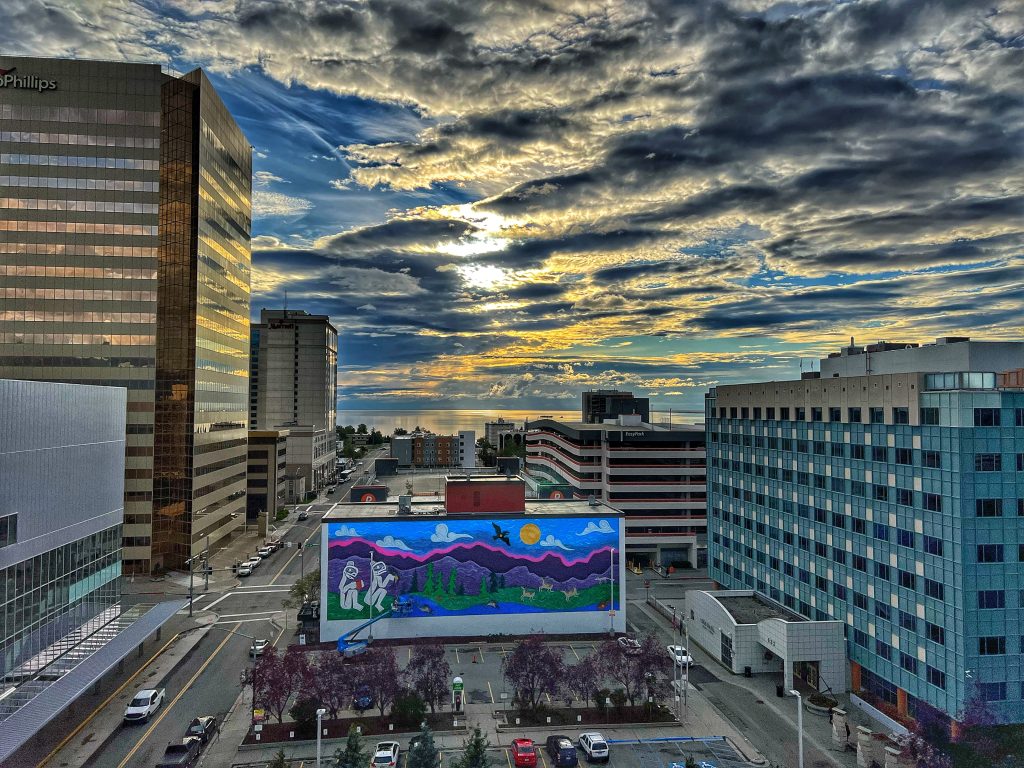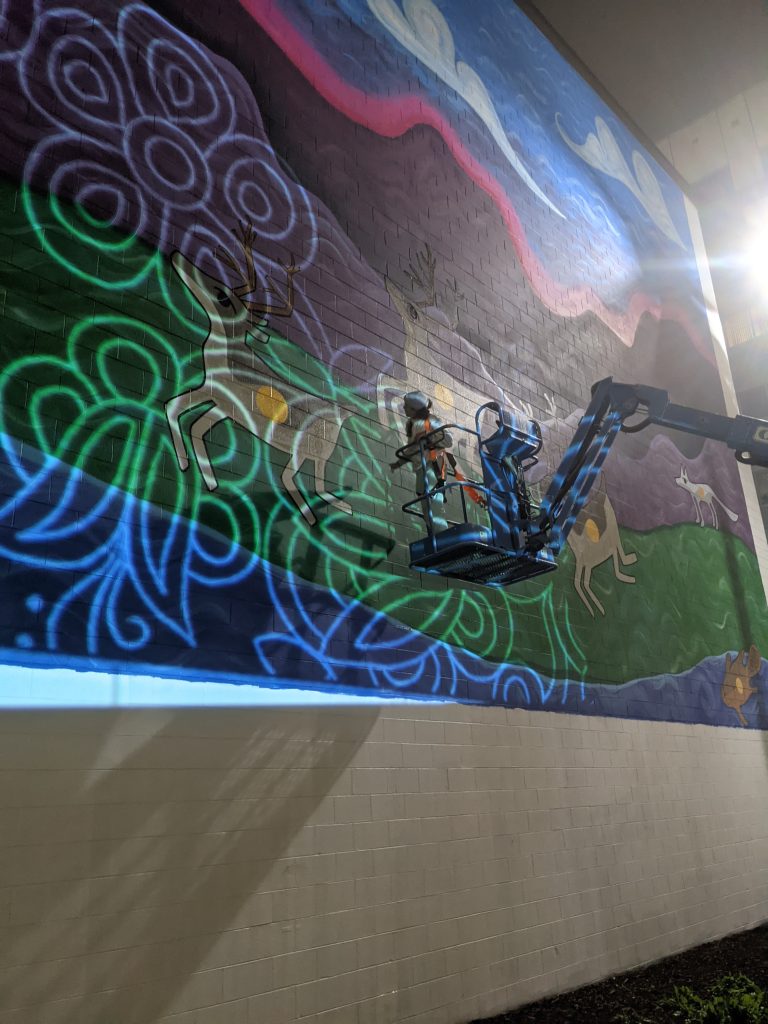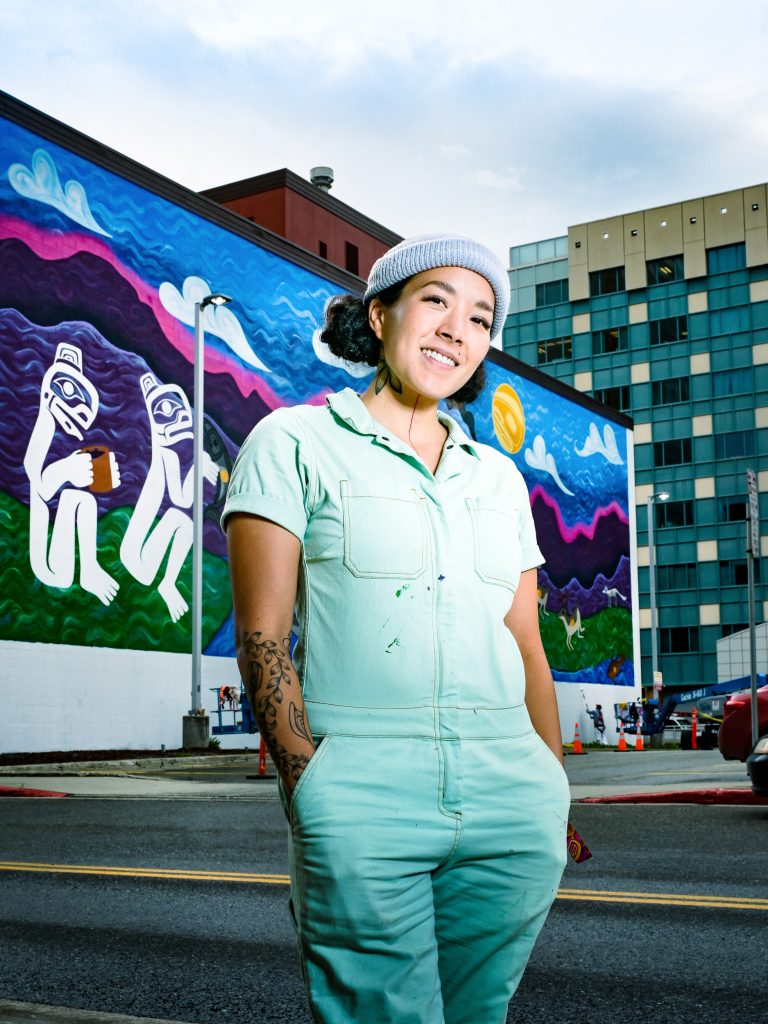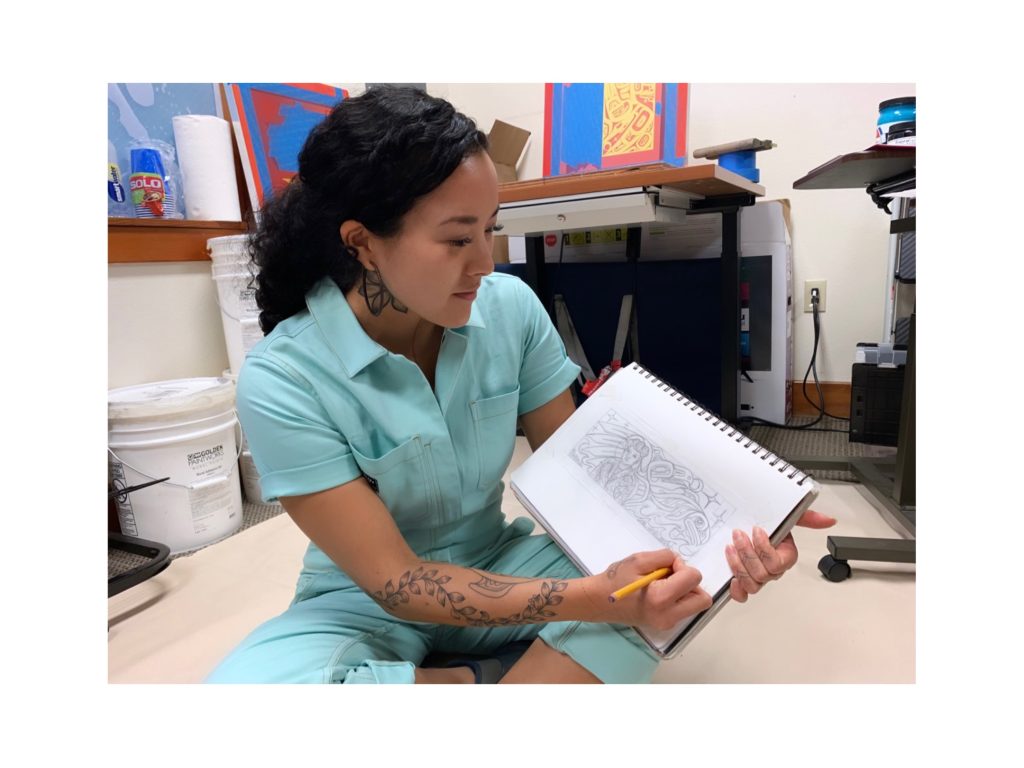Earlier last month, Crystal Worl (Tlingit, Athabascan, Yupik, Filipino) completed a 125 x 48 ft mural in Anchorage, Alaska, depicting and representing traditional symbols and art styles of the area’s Indigenous nations. The mural was sponsored by the Alaska Mural Project and completed over a three-week period in which Worl and her team triumphed over uncooperative weather to create the spectacular public art piece. We sat down with Worl and discussed the process of creating the mural and the significance it holds both for the artist and the community.
Worl grew up in Alaska and always had an affinity for artistic crafts, starting with drawing on the walls and over her homework. She grew up in a family that encouraged her talents and she eventually went on to receive further education at the Institute of American Indian arts in Sante Fe where she received her BFA in jewelry metalsmithing.

Worl stayed at the Institute after her graduation to work as a recruiter before eventually moving back to Alaska. Once she did, she and her brother Rico started Trickster Company, “an innovative Indigenous graphic design and art gift shop. It’s just been so inspiring to meet other artists and collaborate with them and other brands that are Native owned.”
Over her career, Worl has worked on a series of public murals, her latest one being two years in the making. She originally applied to a callout for artists put out by the Alaska Mural Project who partnered with the Anchorage museum. After various interviews, Worl was chosen to be one of the artists and was eventually paired with a building. However, she had to consider whether or not this building was right for her, as it already had a mural on it with a particular meaning.

“The mural I had covered up was done almost 30 years ago and had this very linear timeline of Anchorage’s history. Basically, in the year 1000, you could see in the top left corner there were these Native people in hooded parkas within their huts with animals. As the timeline moves forward all the way to 2000, there’s no acknowledgment of Indigenous people existing in Alaska…I took a lot of time to make the decision if I wanted to say yes to getting offered this building because I want to know who the artist was whose working I’m covering up, what does it mean, and why.”
The central themes that Worl wanted her mural to exemplify were land acknowledgment and the inclusivity of Alaska’s many different Indigenous nations. She spent much of the planning process researching the cultures and art styles of these nations and what symbols appeared throughout them.

“The one common denominator that was really powerful in all the different tribes was subsistence life. Living off the land and fishing, smoking fish, hunting. It’s something that continues since the beginning and to this day, and that will continue. We’re doing what our ancestors did, we’re being innovative and adapting to change.”
Worl included different designs of beadwork patterns and Tlingit formline designs, as well as a golden circle present in many of the figures on the mural, a symbol for the inner spirit. While designing the piece, they wanted to include as much representation as they could, but also to keep the finished product consistent and balanced so as not to be too overloaded.
When it came to actually creating the mural, Worl had to use a variety of techniques to apply her designs to the wall. The first was a grid method which she matched with the background so that she could paint on the landscape, the mountains, and the sky. For this step of the process, the Anchorage Museum flew in John Osgood from the Seattle Mural Project to help with the measurements.

The second technique employed was the “chicken-scratch” method. Points were placed around the wall with tape or chalk, where then an image was taken and then superimposed over the design so that Worl could tell where figures were supposed to go on the wall in relation to the markers. For the final details, Worl reached out to a friend who had converted a van into a large projector so that she could see the design on the wall itself and fill in those last touches.
For this project, Worl was assisted by Osgood and four apprentices to complete the mural. A major challenge they faced was the weather, which came at them with constant rain, wind, and fog.
“We really had to embrace working in the rain most of the time and then it got windy. The night we were using the projector, it got super foggy, really eerie, and spooky (kind of loved it). But it didn’t make it easy.”
Coming out on the other side triumphant, the finished piece is an absolute marvel to behold, even more so when one considers what it means for Indigenous art to be displayed in such a public setting, and what it means for those around. What was originally a mural that glazed over and diminished the stories of the Indigenous nations of Alaska, has now been replaced with one that exemplifies and celebrates them.
“I went to high school in Anchorage and I remember looking at that mural and going to school and learning about Christopher Columbus ‘discovering’ America and Captain Cook ‘discovering’ Anchorage and learning very little about Indigenous peoples. I hope to seed something different in the next generations of people who grow up in Anchorage and who see this mural.”
You can follow Crystal Worl’s work @crystalworl on Instagram and visit their shop here.









